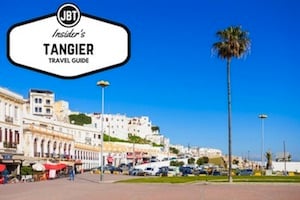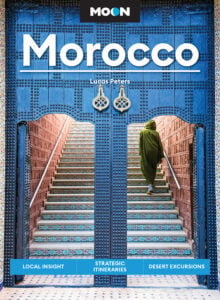
Black soap (or sabon bildi) is essential to the Moroccan hammam (or spa). Rarely do you use black soap outside of the hammam. In fact, a trip to the hammam without black soap would be considered a waste of hot steam and marble tile!
When you open a pot of black soap, the aroma is unmistakable. It is organic, a mix of rain-fresh water and a field of olive trees baking under the warm summer sun.
Where Black Soap Originated
The black soap found in Morocco is distinct from what is commonly referred to as African black soap, a West African hard soap made from the ash of local plants, such as plantain leaves, shea tree bark or palm tree leaves. Moroccan black soap originated in Syria and made its way to Morocco with the Arab conquest of the North Africa.
How Black Soap Is Made
Black Soap has a gooey like consistency and, like any good thing in Morocco, is made of olives! Typically, 100% virgin black olive oil pureed with black olives. The saponification process (the making of something into a soap) is done by adding potassium hydroxide. This is a key distinction from soap bars and allows for its wonderfully gooey consistency. And a drop or two of eucalyptus essential oil and voila you have Moroccan black soap.
How to Use Black Soap
You can buy packets of black soap in the hammam or you can get your own jar of black soap in most Moroccan corner stores. Along with the black soap, you will want to make sure you buy a keesa (a body scrubbing mitt with sandpaper-like texture). The combination of the black soap and keesa will give you an exfoliation like no other! If you want to leave the hammam with soft, silky skin that will last days with no additional moisturizer necessary, make sure you bring these essential items with you on your trip to the hammam!
Once inside the hammam, you will sit in the first room to acclimate to the heat and then you can enter the hottest, sauna-like room where you will really open your pores. In there you begin applying the black soap. This soap does not lather up and feels more like a lotion. It feels slippery. Moving in round, circular motions, you apply the substance on every part of your body. You may begin to feel dead skin coming off. This is a good thing!
Some women will rinse the black soap off and then apply it again. They might do this two or three times before beginning the scrubbing process.
With the soap still on your body, use the keesa to scrub your skin repeatedly. Dead skin flakes might come off in strings, sort of like spaghetti. Don’t worry. This is totally normal! In most upscale hammams, the woman who works there (the tayyaba dyal hammam) will scrub you done. But beware! She will scrub you harder than you’ve ever been scrubbed. However, this is a good thing. When she is done, you will be baby-soft.
Once you have finished with the scrubbing and exfoliation, you will be able to rinse off with cooler water. Though be careful not to apply any kind of product or lotion, except maybe a toning water, to your skin. At this moment, your skin is so fresh that the product will most likely clog up your pores and ruin your new smooth, silky skin!
About the Author
 Sanae Lahgazi-Alaoui was born and raised in the mountains of Morocco. She is a Moroccan-American who spends much time contemplating culture in Morocco, as well as cross-cultural interaction. Every so often, she actually gets to write about Moroccan culture as she pursues a career in freelance writing. She recently graduated with a degree in Sociology and is working on an upcoming blog about the intersection of everyday life and (North) African feminism. Sanae currently lives in Atlanta and enjoys travelling back to Morocco and exploring new countries.
Sanae Lahgazi-Alaoui was born and raised in the mountains of Morocco. She is a Moroccan-American who spends much time contemplating culture in Morocco, as well as cross-cultural interaction. Every so often, she actually gets to write about Moroccan culture as she pursues a career in freelance writing. She recently graduated with a degree in Sociology and is working on an upcoming blog about the intersection of everyday life and (North) African feminism. Sanae currently lives in Atlanta and enjoys travelling back to Morocco and exploring new countries.
[wpdreams_rpp id=0]








